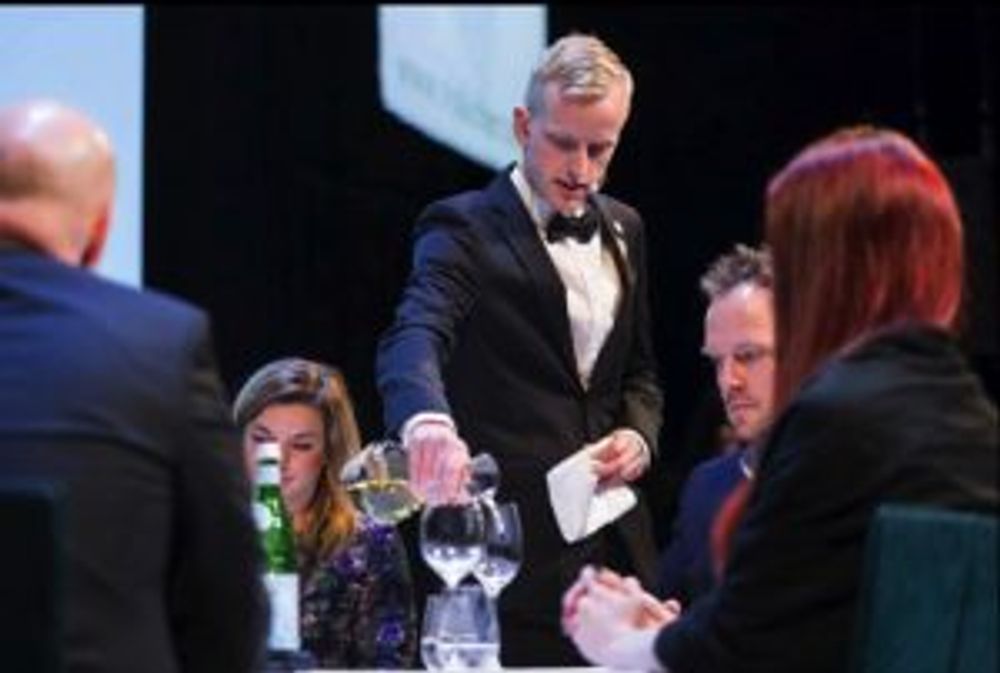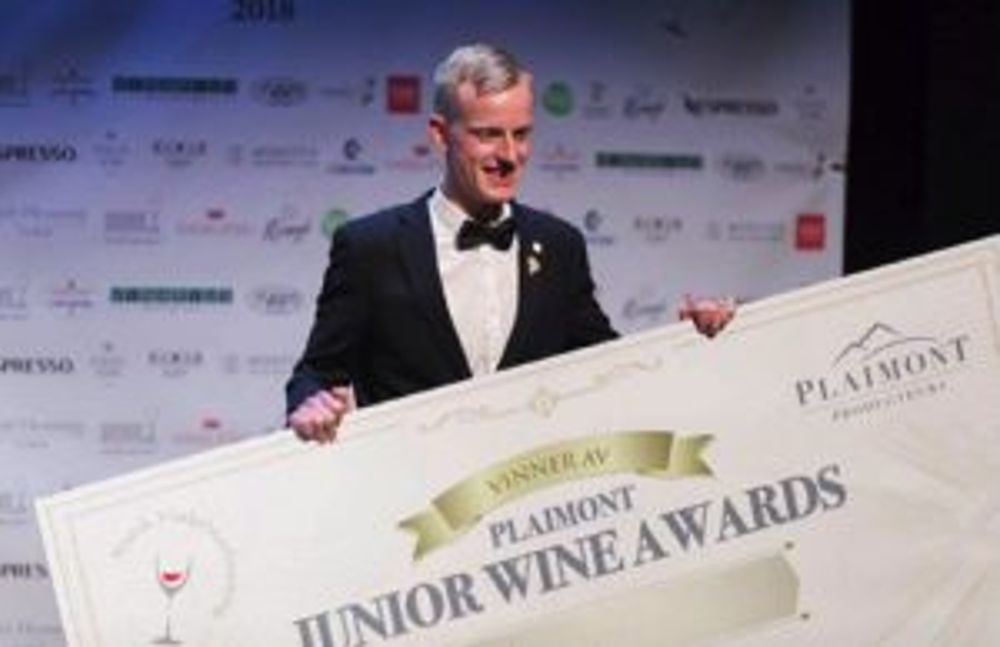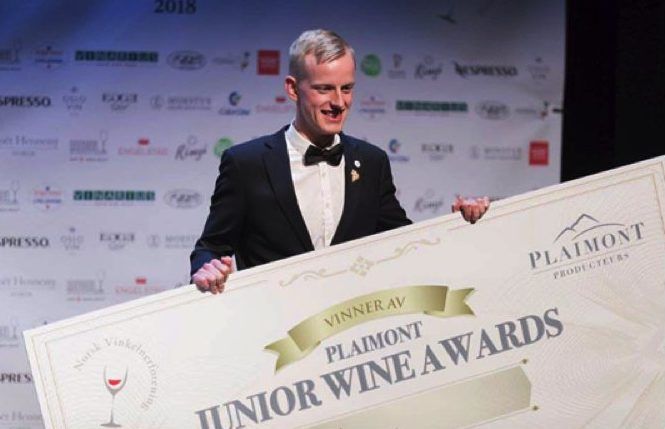One really has to work hard to keep up with everything from mezcal to artisanal hoppy ciders over to small wine regions making stellar stuff like Valtelina, Ribeira Sacra, Gredos and so on. But all in a day’s work for Andreas Hogfeldt.
How long have you been a sommelier?
I’ve been working as a sommelier for about three years and a few years as a waiter before that in Denmark and now Norway. I took my first headwaiter/sommelier position about three and a half year ago at a place called Lysebu just outside of Oslo.

It’s a place right out of Norwegian folklore fairy tales up the mountains outside of Oslo where they have one of the most amazing cellars that I have ever been able to work with that has been built up for the last 25 years. I am grateful to have been able to open my fair share of old bottles from that cellar.
If you are ever in Oslo go there and drink a bottle of old Didier Dagueneau while watching the sunset over the mountain ridge.
Which venues in Oslo do you look after?
I primarily look after the wine program at an upscale brasserie called Brasserie Ouest in the western part of Oslo with about 950 listings in the cellar primarily from the Old World but spiced with some personal favourites from the New World…. who said Holus Bolus Franc de Pied Syrah?
What style of food is it there and how easy is it to pair with?
It is a classic brasserie based on classic cooking techniques with a slight Austrian influence due to the Head Chef hailing from Vienna. Thankfully he is quite fond of acidity in the dishes we serve which makes it relatively easy to pair with as long as you have good structure and some ripe acidity in the wines – the ripe tannins and structure of 2015 Langhe Nebbiolo G. Rinaldi and Braised pork neck are a match made in heaven.
How does the wine buying work?
We buy mainly from a well-established network of suppliers we have developed a close relationship with.
What is your approach to matching food and wine?
I always try to think about what the classic flavour profile would be to pair it with – what are the primary flavours of the food, and then look at if it is smoky, saline, spicy, sweetness etc. and then think where I find something that matches in beverages and support these to really bring out the flavours of the food.
Working in a brasserie is for me about supporting the food to bring out pronounced flavours. A favourite of mine right now is Fine de Clair oysters with parsley and horseradish paired with Muscadet Gorges 2012 from Betes Curieuses. Gorges is close to the River Sevre so is quite a rich Muscadet style – a classic pairing, but oh so good, the richness of sur lie ageing for three years with the floral aromas and saline flavours work really well together, while being rich enough to not be overpowered by the horseradish!
What are the unique challenges of being a drinks buyer in Norway?
Norway has quite a well developed network of importers and distributors even though it is only since 1996 that the Norwegian alcohol market was semi-liberalised. Private people still have to go to the Monopoly stores.
The biggest challenge is that there is quite strict regulation about importing wines yourself, so getting access to older wines or wines that do not exist in Norway (Old Chartreuse, Clos Rougeard, Domaine Labet, Chartogne Taillet etc.. ) is difficult to get over the border from the EU.

How has the role evolved in Norway over the years?
The role has maybe not developed much from the past, but I have become a lot more prominent in restaurants with wine becoming a larger part of the dining experience in Norway.
Still a long way to go compared to the US or other markets, but there is definitely more recognition on the importance of having a good sommelier employed these days.
How do you keep abreast of new vintages/ wines/ drinks?
Industry tastings is the most important opportunity for me to keep up with new vintages and wines as there is no substitute for tasting the wines yourself.
As in keeping up with theory I find the Guildsomm website helpful as well as having a ‘book collecting’ gene.
With all the new styles and beverages coming into the market at the moment one really has to work hard to keep up with everything from mezcal to artisanal hoppy ciders over to small wine regions making stellar stuff like Valtelina, Ribeira Sacra, Gredos and so on.
Why did you want to be a sommelier?
I initially started out as a waiter but felt that I needed to add another layer of complexity to my work which I found through sommeliership, oh and I love to drink wine..
Who has been your greatest inspiration in your career so far?
It is difficult to say as there have been so many different people throughout my career so far, who have been a great help and inspiration in many ways. Too many to name here and not forget a few…
What do you see as the most important skills a sommelier must have?
Social skills, discipline, curiosity are all very important for working as an sommelier.
Along with a good sense of economics if one is responsible for wine buying, it is easy to make a great wine list – much more difficult to make an interesting and financially sound one.
What makes the right kind of background to be a good sommelier?
I find that almost everyone has a different background. Sommeliers I know used to work as everything from pastry chefs to primary school teachers although most have a few years in restaurants’ front of house before going into a sommelier position.
You are currently Normay’s top young sommelier for 2018. How did that come about?
Every year the Norwegian Sommelier Association hosts a National Championship. At the same time they host a competition called Junior Wine Award meant for young up-and-coming sommeliers. where you are tested in the traditional sommelier disciplines like, blind tasting, theory, service and food-and-wine pairing.
This year we were seven sommeliers competing in the young category and thankfully I came out on top when the scores were added up.

What does the award mean to you?
It is a very nice recognition of all the hard work and studying that I have done in the months leading up to the competition and also a motivation for the future to know that I am hopefully doing the right thing when it comes to bettering myself and improving my own skillset.
What was your most nerve-racking moment in the competition?
The wait for going on stage is probably the most nerve-racking moment in the competition. Imagining going on stage – dropping a bottle of wine into the lap of the judges. Not knowing the answers to questions etc. really makes one’s hair line quite a lot higher than before the competition…
Is it good for career progression do you think?
I think it have been one of the most crucial elements in my personal career progression. It is an excellent way of promting yourself, showing what you can do and I think most importantly it shows that you’re willing to push to being better.
Will you enter more sommelier competitions?
I will be attempting to take on the challenge of becoming the best sommelier of Norway, which is held in February hosted by the Norwegian Sommelier Association and ASI. Hopefully I will make it to semi’s.
If you could have just one white wine and one red wine what would they be and why?

On the red side I am right now deeply in love with anything Grenache/Garnatcha/Garnatxa so my choice of red would be a bottle of Rumbo al Norte from Comando G in Sierra de Gredos from really old bush wines at more than 800m in Valle Del Alto Alberche.
This style of elegant Rayas-esque Garnatcha is really coming into is own. Elegance like an aged bottle of Roumier combined with the minerality of pure granite soils at high altitudes – and some of that Spanish spice and sun. Preferably paired with a Norwegian classic. Reindeer pizza.

Kabinett is another personal favourite… and no one does it better than Maximin Schubert at the Grunhaus estate in Ruwer – 2016 Abtsberg Kabinett Riesling from magnum is the right serving size for one person. Elegant and off dry they are drinking beautifully now. Perfect for day drinking as the low alcohol keeps one from getting too tipsy early on.
Works great as a substitute for sun and summer during the cold winter months in Norway.










































